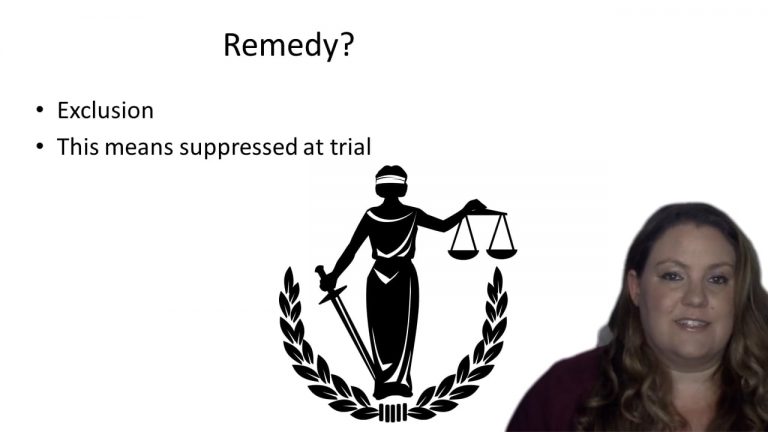SmartBrief
Confirm favorite deletion?
Criminal Procedure Keyed to Dressler
Herring v. United States
Citation:
555 U.S. 135, 129 S.Ct. 695, 172 L.Ed.2d 496.Facts
On July 7, 2004, an investigator learned that the defendant had driven to the Sheriff’s Department to retrieve something from his impounded truck. The investigator asked the county’s warrant clerk to check for any outstanding warrants, and was told that there was an active arrest warrant. The defendant was arrested and the police found methamphetamine in his pocket and a pistol in his car.
However, there had been a mistake about the warrant. The warrant had been recalled five months earlier. The information about the recall of the warrant for the defendant did not appear in the database. The clerk immediately contacted the investigator over a secure radio once the mix-up had been discovered, but the defendant had already been arrested and found with the gun and drugs.
The defendant filed a motion to suppress, arguing that the exclusionary rule applies. The District Court denied it. The Court of Appeals for the Eleventh Circuit affirmed, finding that while the failure to update the records was negligent, it was attenuated from the arrest and the arresting officers were entirely innocent of any wrongdoing or carelessness. The Eleventh Circuit concluded the evidence was admissible under the good-faith rule.
Only StudyBuddy Pro offers the complete Case Brief Anatomy*
Access the most important case brief elements for optimal case understanding.
*Case Brief Anatomy includes: Brief Prologue, Complete Case Brief, Brief Epilogue
- The Brief Prologue provides necessary case brief introductory information and includes:
Topic:
Identifies the topic of law and where this case fits within your course outline.Parties:
Identifies the cast of characters involved in the case.Procedural Posture & History:
Shares the case history with how lower courts have ruled on the matter.Case Key Terms, Acts, Doctrines, etc.:
A case specific Legal Term Dictionary.Case Doctrines, Acts, Statutes, Amendments and Treatises:
Identifies and Defines Legal Authority used in this case.
- The Case Brief is the complete case summarized and authored in the traditional Law School I.R.A.C. format. The Pro case brief includes:
Brief Facts:
A Synopsis of the Facts of the case.Rule of Law:
Identifies the Legal Principle the Court used in deciding the case.Facts:
What are the factual circumstances that gave rise to the civil or criminal case? What is the relationship of the Parties that are involved in the case.Issue(s):
Lists the Questions of Law that are raised by the Facts of the case.Holding:
Shares the Court's answer to the legal questions raised in the issue.Concurring / Dissenting Opinions:
Includes valuable concurring or dissenting opinions and their key points.Reasoning and Analysis:
Identifies the chain of argument(s) which led the judges to rule as they did.
- The Brief Prologue closes the case brief with important forward-looking discussion and includes:
Policy:
Identifies the Policy if any that has been established by the case.Court Direction:
Shares where the Court went from here for this case.
Topic Resources
Topic Outline
Topic Refresher Course
Topic Charts & Notes

 15m 53s
15m 53s